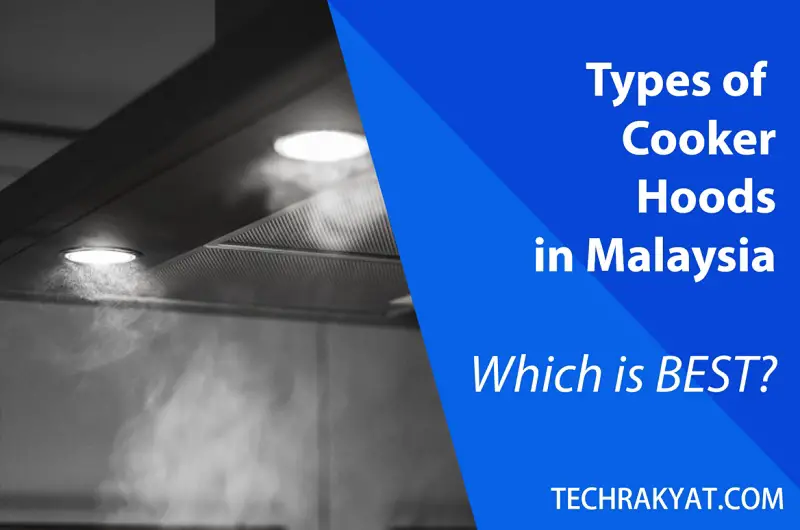It is common for people to focus only on getting the best kitchen stoves or pressure cookers, but they neglect the importance of a kitchen hood.
Having a good kitchen hood will ensure that the air in your kitchen is clean while you are cooking, as well as ensure that your kitchen is not sticky after cooking.
Table of Contents
ToggleTypes of Cooker Hood
In general, there are two types of cooker hoods: vented/ducted and recirculation.
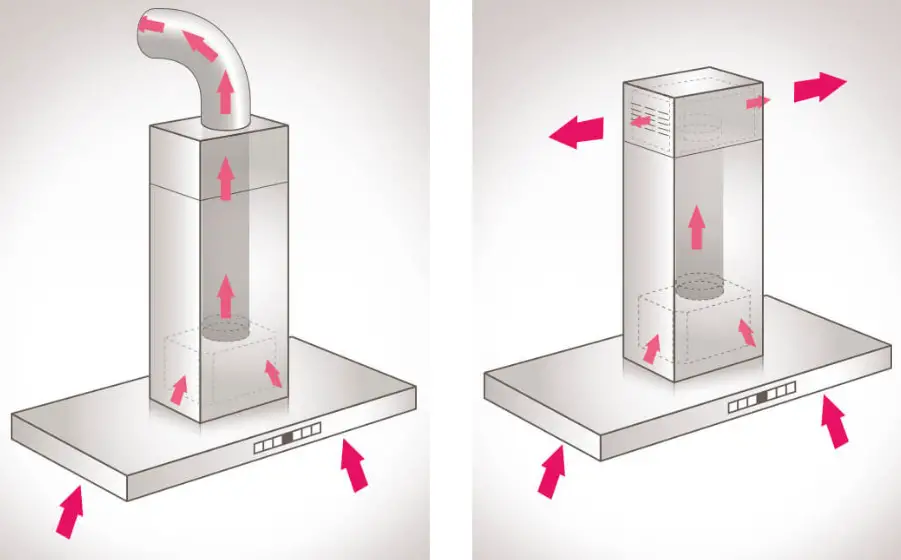
Vented Cooker Hoods are ducted cooker hoods that draw air, smoke and grease out of the kitchen entirely
Recirculation Cooker Hoods are ductless hoods that filter smoke and grease with built-in filters and recirculate the filtered air back into the kitchen.
Then, these cooker hoods can come in different designs, such as:
- Chimney cooker hood
- Slanted cooker hood
- Integrated cooker hood
- Telescopic hood
- Downdraft hood
1. Chimney Cooker Hood
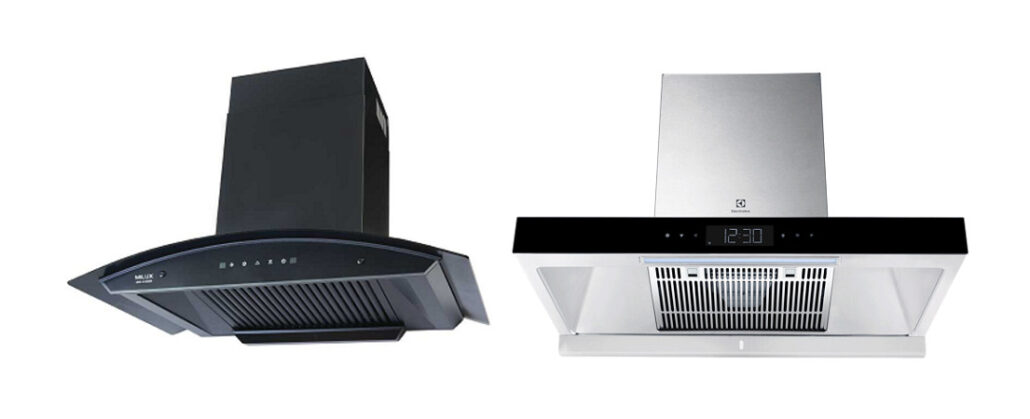
Chimney cooker hood is the most classic cooker hood style. This is a tried-and-true design for removing smoke and gas during cooking.
The chimney cooker hood design has very strong suction. This is why you often see it being used in commercial kitchens as well.
Installation of the chimney cooker hood is very flexible. It can be mounted to the wall or installed above a kitchen island.
The biggest disadvantage of this type of cooker hood is that it usually takes up very big space.
Pros
- Good suction power
- Efficient in removing smoke, odour and heat
- Affordable
- Many sizes available
Cons
- Requires big space, not suitable for narrow kitchen
- Users may accidentally hit on protruding part of the hood
2. Slanted Cooker Hood
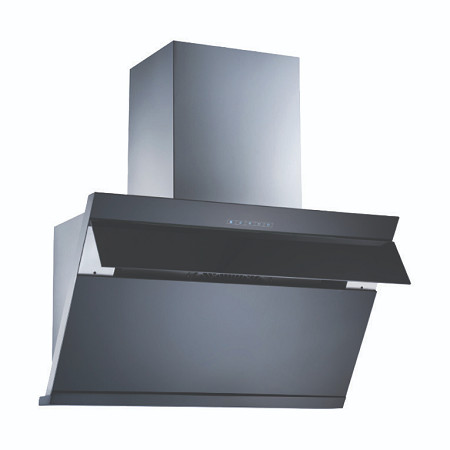
Slanted cooker hood is the improved version of the conventional chimney hood. A slanted cooker hood is also known as an angled hood or an inclined hood.
A slanted cooker hood offers many of the benefits of a straight chimney hood as well as a space-saving design. The slanted hood allows users to cook with a more ergonomic stance
Pros
- Space-saving design,
- Taller height clearance, no risk of hitting on the hood accidentally
- Great suction power that is able to remove smoke and odour efficiently
- Modern design options are available
Cons
- More expensive than a traditional straight chimney hood
3. Integrated Cooker Hood
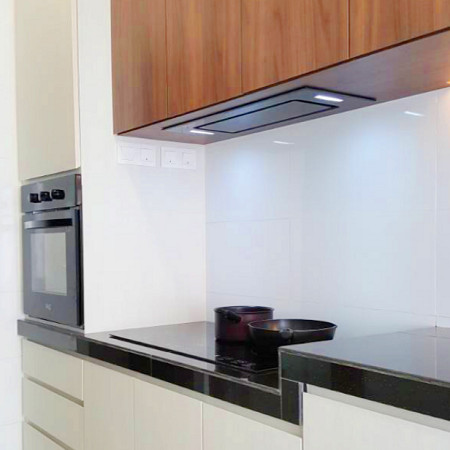
An integrated cooker hood or built-in cooker hood is one of the most sought-after designs in the modern kitchen. In this way, it provides a more seamless aesthetic by matching perfectly with your kitchen cabinets.
Since integrated cooker hoods lack the big wide hood of conventional cooker hoods, they often capture smoke less efficiently.
Pros
- Minimalist design, blend perfectly with kitchen cabinet
- Save space, great for small kitchen
- No risk of hitting on the hood.
Cons
- Limited suction power
- Less efficient due to the lack of hood
- More difficult to install
- Have to plan ahead and select the mode prior to installing the kitchen cabinet
- More expensive
- Can be very noisy
4. Telescopic Hood
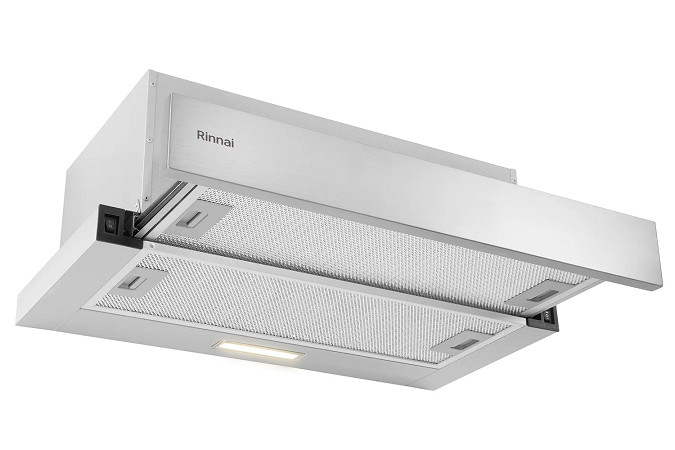
Telescopic hood or slide-out hood is an improved version of a built-in kitchen hood. The roof is retractable and telescopic.
Users can pull out the hood when start cooking. This help to increase the capture area so that it can capture smoke slightly better than the models without telescopic hood.
However, when the hood is extended, users will risk hitting their heads against the hood itself.
Pros
- The hood can be extended or retracted as needed
- It is slightly better than a built-in cooker hood without a canopy
- Space-saving design
Cons
- Limited suction power
- Can be very loud when using high power
- Limited design and sizes options are available
- Expensive
5. Downdraft Hood
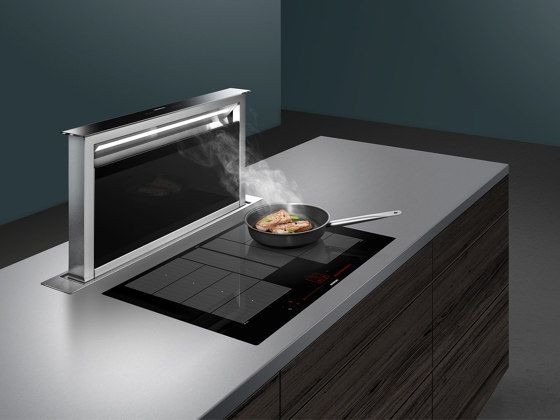
Downdraft hood is the latest innovation in kitchen hood design. It has a completely different design from the standard overhead kitchen hood, which is normally mounted on the wall or on the ceiling.
The downdraft hood is installed behind your cooking hob so that the suction occurs directly above your food while cooking.
Under your countertop is where you’ll find the suction motor, duct, and other components. For that reason, the downdraft hood is normally a recirculating system. Downdraft hoods with ventilation systems are more difficult to install.
Pros
- Great suction power
- Modern design
- Easy to clean
Cons
- Becomes less efficient if the cooking pan or pot is further from the downdraft hood
- Limited capture area
- Most expensive
- Most difficult to install
- Less storage space for the bottom cabinet
- Only suitable for a new kitchen, difficult to install for existing kitchen
Vented or Recirculation Cooker Hood is better?
In my opinion, vented cooker hoods are better than recirculation cooker hoods. It directly extracts and removes the smell and grease of cooking from indoors to the outside. In this way, the air inside the house is kept fresher and cleaner.
On the other hand, the recirculation hood system emits filtered air back into our house. It is likely that a small fraction of contaminants will be returned into the indoor air as well as smell and moisture. Hence, they are less effective as compared to vented cooker hoods.
Hence, I believe a vented or ducted cooker hood is the best type of cooker hood unless there’s no way to install a proper duct system to remove the air from indoors.

